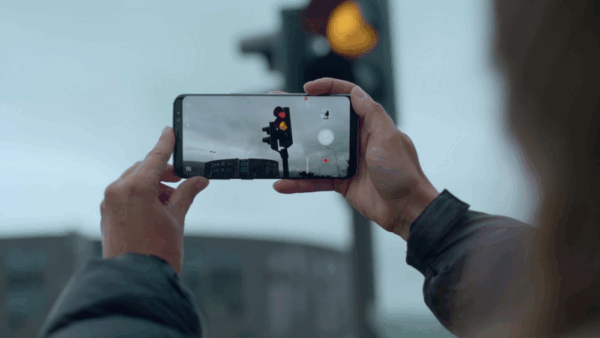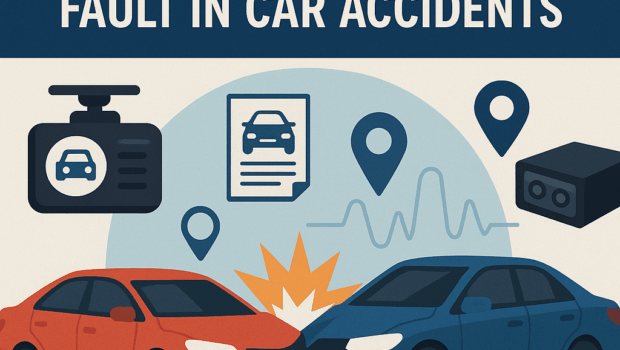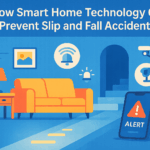How Can Technology Help Determine Fault in an Accident?
Accidents on the road are an unfortunate but common part of modern life. With millions of drivers sharing the streets every day, understanding who is at fault in a collision can be a complicated process. Traditionally, determining fault has relied on eyewitness accounts, police reports, and physical evidence from the scene. However, with the rise of modern tools and innovations, technology is becoming a key player in establishing responsibility in car accidents. From advanced vehicle systems to digital data collection, technology is helping to paint a clearer picture of what happened before, during, and after a crash.

Data from Daily Driving Habits
According to The Zebra, the average American drives 14,263 miles per year. With so much time spent behind the wheel, the likelihood of encountering an accident—whether minor or major—is significant. This high volume of driving has pushed the need for better ways to monitor and analyze road incidents. Technology such as dashcams, GPS tracking, and mobile apps can collect a wealth of data about a driver’s behavior. These tools can record speed, braking patterns, and real-time location data, all of which are incredibly useful when trying to understand how an accident occurred.
For instance, dashcams can provide visual evidence of the moments leading up to a crash. This footage can show who ran a red light or whether one driver was tailgating another. Insurance companies and law enforcement agencies increasingly rely on this kind of technology to support or refute claims made by the parties involved. Furthermore, mobile phone records and app data can reveal whether a driver was distracted at the time of the accident, such as texting or using a navigation app unsafely.
Built-In Vehicle Technology and Manufacturing Trends
In 2021, 9.2 million US vehicles were produced, according to Zippia. A large portion of these vehicles came equipped with advanced driver-assistance systems (ADAS) and onboard diagnostics. These built-in technologies offer valuable insights that can be used to determine fault. Features like lane departure warnings, collision alerts, automatic emergency braking, and blind-spot monitoring all log data during their operation. When an accident occurs, this data can be retrieved and analyzed to see what warnings or actions the vehicle initiated.
Black box technology, similar to what is used in airplanes, is also becoming more common in modern vehicles. These devices, technically called event data recorders (EDRs), store critical information such as speed, seatbelt use, throttle position, and airbag deployment just seconds before and after a crash. When combined with external evidence, this internal data helps form a comprehensive overview of the event, making it easier to assign responsibility accurately.
Legal Framework and Technology’s Role
Laws vary from state to state when it comes to determining fault, and understanding these rules is essential for interpreting technological data properly. For example, Texas is a shared fault state, and if the injured party is found to be less than 50% responsible for the accident, they can get compensation for their injury. In shared fault or comparative negligence states, technology can be crucial in proving who holds what percentage of responsibility.
Suppose one driver claims they were not speeding, but data from the vehicle’s EDR shows they were going 20 mph over the limit. In that case, the percentage of fault could shift more significantly in their direction. Alternatively, if ADAS logs show that a driver’s automatic emergency braking system activated, this might support their claim that they tried to avoid the crash. These small but powerful pieces of technological evidence can have a big impact on legal outcomes and insurance claims.
Technology also supports the legal process by providing consistent, unbiased information that isn’t subject to memory lapses or personal biases. Digital evidence doesn’t “forget” details and isn’t influenced by emotions, making it a reliable supplement to human testimony.
Conclusion
As vehicles become more advanced and roads become more crowded, the importance of accurately determining fault in accidents grows. Technology is at the forefront of this effort, offering tools that range from dashcams to onboard data systems and beyond. These innovations not only help drivers and law enforcement get a clearer understanding of what happened during a collision, but they also play a vital role in the legal and insurance processes that follow. By continuing to integrate and improve these technologies, society moves closer to a more efficient, fair, and data-driven approach to accident resolution.
















